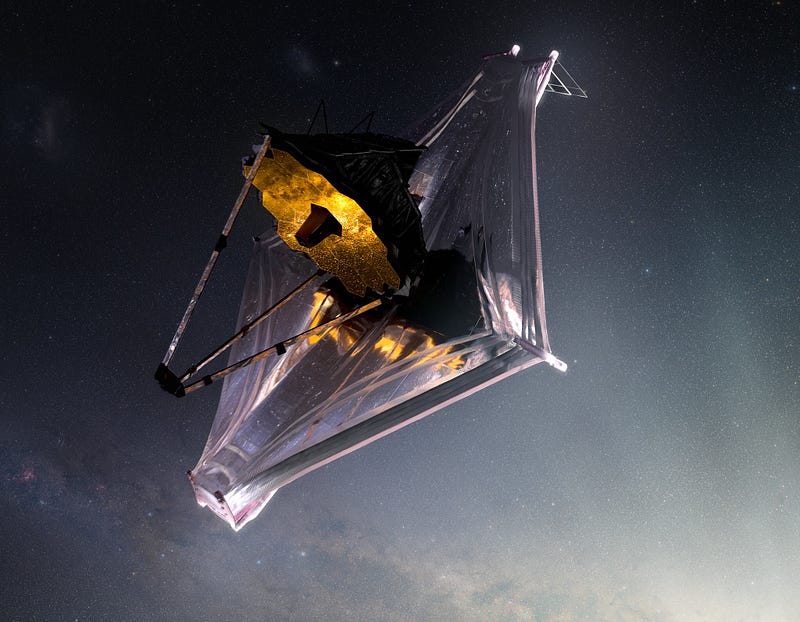Exploring New Frontiers: Could City Lights Reveal Alien Life?
Written on
Chapter 1: The Search for Extraterrestrial Life
Where are all the aliens? This intriguing question has confounded scientists for years. Despite the belief that numerous intelligent species exist across the universe, we have yet to observe any signs of life or receive any radio signals. However, recent research suggests that our search methods may need reevaluation. Instead of solely relying on detecting radio waves, we could potentially observe the glow of alien city lights. But how feasible is this, and is it truly a valuable pursuit?
This concept is supported by earlier research from Avi Loeb. With the advent of the James Webb Space Telescope (JWST), we now have new methods for astronomical observation. Unlike previous telescopes that could only infer the existence of exoplanets, JWST can actually capture images of them. While the details remain elusive, it can detect light reflecting from an exoplanet's surface.
Long before JWST became operational, Avi Loeb had already theorized about using its capabilities to identify extraterrestrial cities. His calculations focused on Proxima b, the closest Earth-like exoplanet. By capturing images of this exoplanet from different angles in its orbit, we can analyze its day and night sides. Any brightness discrepancies might indicate artificial illumination from an alien civilization.
Section 1.1: The Sensitivity of JWST
How effective is this technique? It turns out that if the urban development on the night side emits even 5% of the brightness of the day side, JWST can detect it. For context, Earth’s city lights illuminate the night sky to only 0.01% of the brightness of the day. Interestingly, if the city lights on Proxima b were to be 1,000 times narrower in wavelength than the light from its star, JWST might identify illumination as faint as 0.01%.
JWST has exceeded expectations, suggesting that initial estimates may be conservative. There’s a possibility it could detect even dimmer lights or observe similar signals from more distant exoplanets.
Subsection 1.1.1: Utilizing Existing Data

Interestingly, this recent study highlighted that the necessary data for this technique can be obtained from already scheduled observations with JWST. This means we can embark on this groundbreaking research without incurring additional costs!
Section 1.2: Reevaluating the Search for Technosignatures
To make this research successful, the broader astronomical community must embrace the search for "technosignatures." For decades, SETI (Search for ExtraTerrestrial Intelligence) has been on the lookout for alien life but has found nothing. This has led many prominent astronomers to doubt the existence of extraterrestrial civilizations around the exoplanets that JWST could potentially image, based on the lack of radio signals.
However, this perspective assumes that alien civilizations would be similar to our own, which is not guaranteed. Therefore, the study advocates for continued exploration, even if current assumptions lead us to expect no discoveries.
Chapter 2: A New Era in Astronomy
The James Webb Space Telescope has just identified a planet that appears to have city lights—could it be a new Earth? This discovery opens up exciting possibilities for understanding our universe and the potential for extraterrestrial life.
Could the James Webb Space Telescope change our understanding of life beyond Earth? As we gather more data about these distant worlds, we may unravel the mystery of why the universe seems so silent—or perhaps, we are on the brink of a discovery that could redefine human history.